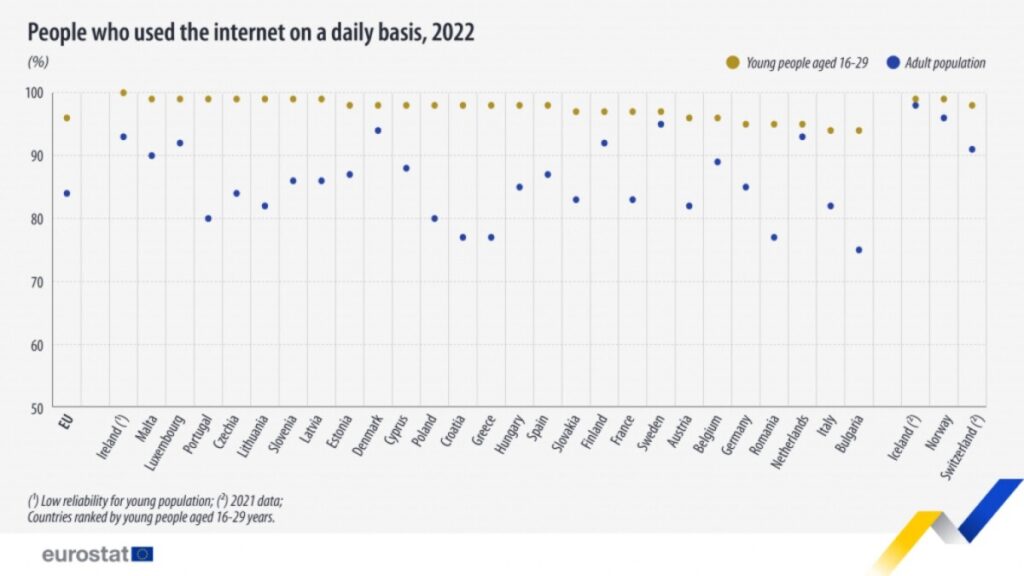According to the European Statistical Service, 98% of young people (16-29 years old) in Greece use the internet every day, while the corresponding figure for the European Union as a whole is 96%.
The difference is quite large compared to 84% of the adult population, according to the Eurostat survey referring to 2022.
Daily internet use among young people was over 94 % in all EU countries. The lowest shares were recorded in Italy and Bulgaria with 94%, and the highest with 100% in Ireland and 99% in seven EU member states: Malta, Luxembourg, Portugal, Czech Republic, Lithuania, Slovenia and Latvia.
While young people reported very high rates of daily Internet use in each country, there was greater variation among adult users. The average difference between the percentage of young people and adults who use the Internet daily in the EU was 12 percentage points (pp).
In the Netherlands, Sweden, Denmark, Finland, Ireland, Belgium and Luxembourg, this gap did not exceed 7 points.
Other EU countries reported high shares of daily internet use among young people but a significantly wider gap with adults: Croatia and Greece (21 percentage points), Portugal and Bulgaria (both 19 percentage points) and Poland and Romania (both 18 percentage points).

The main uses of the internet
Most young people use the internet, but what were some of the main uses in 2022 that have changed over time? According to the data, in 2022, 84% of young people used the internet to participate in social networks.
Among the activities in the graph below, this is the preferred internet use for young people as of 2014, with data varying slightly but remaining high. Some of the other main uses were reading news online (68%) and online banking (64%).

While internet banking use has been steadily increasing since 2014 ( 45% of young people) , reading news online peaked in 2020 (73%) and has since lost momentum as the proportion of young people reading online has declined (- 5 am).
Due to the COVID-19 pandemic, most activities saw an increase, especially when it comes to the use of the internet for online courses, which jumped from 13% in 2019 to 35% in 2021. However, in 2022, this percentage dropped to 28 % (-7 p.m.) , but still much higher than in 2019.
In 2022, only 23% of young people used the Internet for civic engagement or politics, an activity that has seen a slight increase since 2015.
READ MORE: Heatwave Cleon returning in full force after Wednesday.

